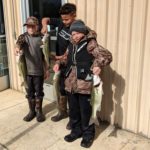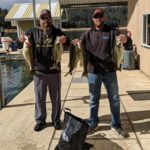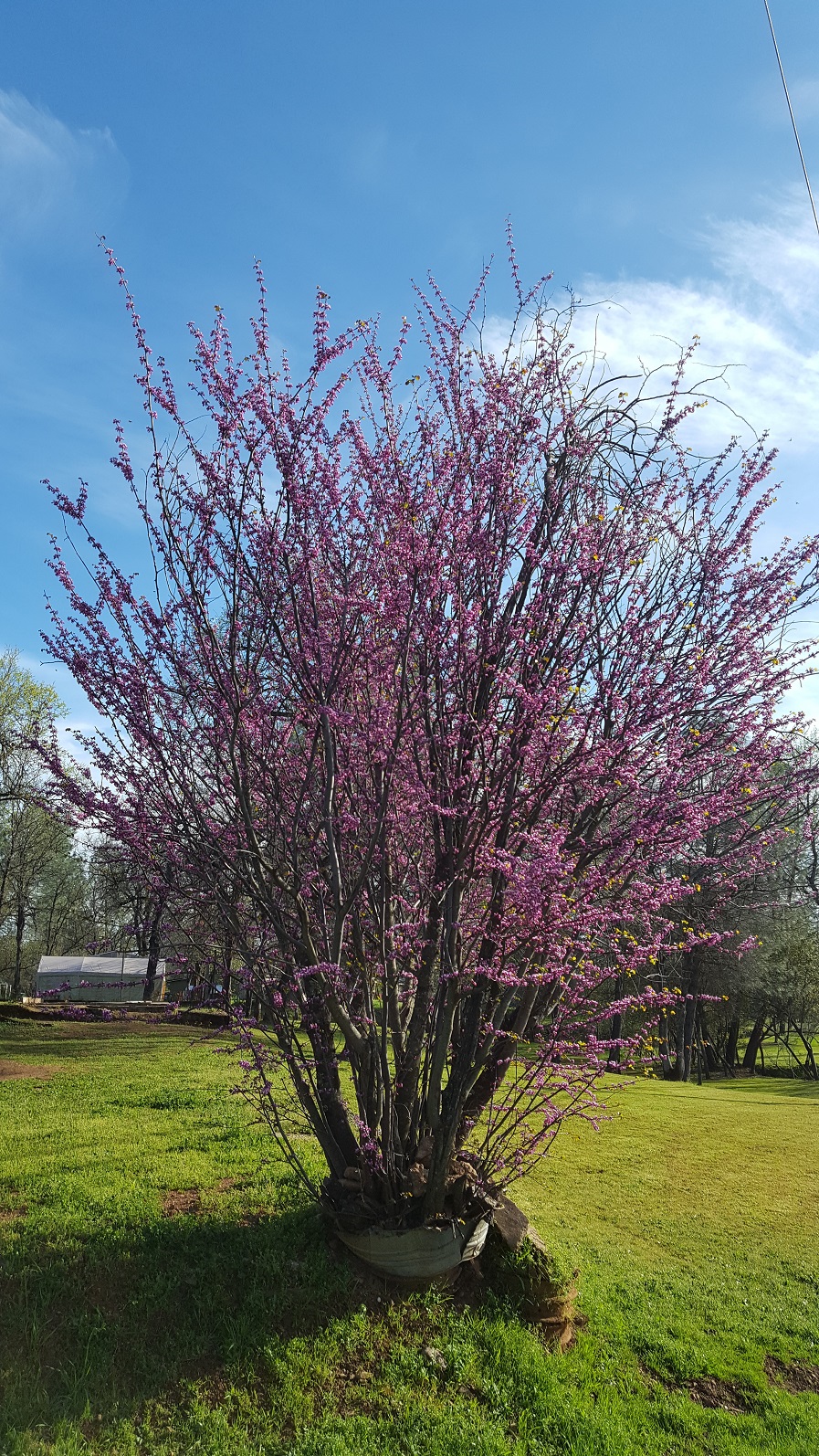Yay– Time for Spring Bass
Warmer water has April spotted bass prespawn on Lake Shasta written all over it fans. Some record heat in late March has the water temperatures in the 56-58 degree range on most of the lake, and the fill rate is bringing the level up to looking at the top. There is a comprehensive, current lake level/river flow report list on the home page, but you can view it by clicking here. Much of the driftwood stranded high on the shoreline when the lake level dropped will begin migrating back out on the lake as the levels rise. There isn’t a lot out there right now, but anticipate much, much more by mid-April. Take a look at my article from last season here.
There seem to be fish caught pretty much all over the lake right now, and many of the success stories are touting big swim baits as the go to lure. We are talking about some big spotted bass here on Lake Shasta now, a body of water rarely in the discussion about big bass. Great big lake yes, big bass no, but it is changing with more bass enthusiasts working over 360 miles of shoreline. Pros, amateur, and kids have all been doing some great work finding these fish during their many tournament, and just recreational angling adventures.=


Why is this prespawn?
The prespawn is the time these fish are preparing for their yearly spawning cycle. When exactly these fish spawn is predicated on the water temperatures needed for the eggs to hatch, and the brood to survive, and according to studies the water temperature needs to be 63 degrees. As mentioned above the water temperature in Lake Shasta is in the high 50’s, and these fish are becoming really active. How active you may ask? As little as two weeks ago when the water temperature was in the low 50’s and high 40’s I found these fish would bite, but only some crawlie thing presented on the very bottom of the water column. A couple of days ago, with the water temperatures in the high 50’s, the fish were chasing these baits up from the bottom, and hit on a suspending jerk bait.
These are sure signs of prespawn activity to my way of thinking. The male bass are staking out prime areas for creating the spawning redd, and doing so they are defending this bit of aquatic real estate from anything that comes near like other fish, bottom crawling creatures, and the like. The males are also eating as much as they can to bulk up for the spawn and fry rearing when they will have no chance to chase a meal. This is a prime time for anglers to catch lots of fish per outing. The rub is that most of the fish chasing baits will be the males that tend to be smaller than the females.
Although the spotted bass reach an adult status after their first year, they will not be able to actively spawn until their fourth year. They will however be in the same area populated with adults readying for the spawn. These smaller, younger fish are behaving as if they are spawning adults. All of the instincts are the same. This prespawn gorging by the males will help them grow even if they are not able to spawn. So be prepared for lots of smaller fish! Ahh too bad huh?
Baits for Bites
So far I have mentioned big swimbaits, crawlies, and jerk baits. What to use pretty much boils down to what you are comfortable using. To view pretty much anything you may want try philsprop.com for ideas and up to date cutting edge tackle.
The swimbait I am using is a Keitech Fat Swing Impact 4.8 and 5.8 on a 3/8oz round head 4/0 hook. I am most comfortable using the larger hook that is probably more suited to largemouth because it sticks out of the plastic much better than the smaller ones. I believe I get more hook sets like this with the larger Keitechs, but the spots have a much smaller mouth so I have to wait until I am certain the fish has really taken the lure before applying a hook set. This technique saves loosing the tail from a grab, but no hook up. I use a 1/0 and 2/0 round, or darter head hook with the smaller Fat Swing Impacts.
The second swimmer I am using is a glide bait from River2Sea called an SWaver. This is a jointed, hard plastic, sinking bait with treble hooks mounted under the head and at the tail. I have big fish following it, but no strikes yet this season. Big ones last year though!
The crawlies I am using are soft plastic worms instead of true creatures. I do use tubes that imitate crawdads, but have not begun using grubs and skirted jigs. My fishing partner Andrew does though, and has been having just as much success with his comfort zone baits. He prefers the football head style hooks in 1/2-3/4oz so he gets to the strike zone on the bottom quickly.
I am using 5 inch Senkos Neko rigged, and ZMan Big TRD, or Zsink 5 inch Ned rigged. These techniques seem to be perfect for the 40-60 fish to the boat days I have been having! A great benefit of these soft plastics is their durability. One lure will last, and last through multiple bites. They pretty much don’t pull off, and won’t get lost unless there is a snag break off! This saves the time it takes to prepare another bait, and keeps the bait in front of fish much longer, thus allowing many more hook ups. I believe right now color is less important than presentation. The fish are going to grab it if presented into their territory.
Summation
The warmer water temperatures have sparked the prespawn instincts of bass on Lake Shasta for 2018, and the fish have responded by becoming much more aggressive, and active for taking baits. Getting these baits in front of fish can be difficult and dangerous because of driftwood on the lake as it fills nearer the top. The prespawn instinct makes the bass more aggressive, and hungry resulting in lots of hook ups per rod. This is an optimum time to pursue bass on Lake Shasta, and be blissfully Ketchinnee.
Mr Hook
